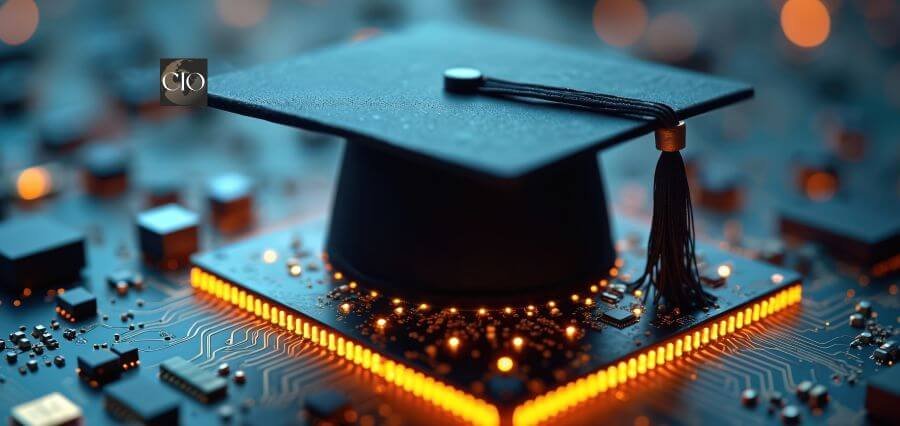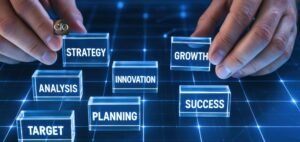Curriculum for the AI Era
The world is moving toward a revolutionary age—one that not only is improving the way we work and live but is transforming what it means to be human in the era of machines. From self-driving cars and preventative medicine to smart tutoring systems and creative algorithms, AI Education already is transforming the fabric of global society. But too many education systems remain rooted in relic models that educate for the industrial age, not the intelligent age underway today.
To fulfill the promise of education’s next chapter, we must rethink education with a sense of urgency. At its core is a fundamental question: Are we educating students with the attitude, the skills, and the moral compass they need to thrive in an age of AI? The response must begin with the curriculum.
Beyond Programming: AI as a Fundamental Competency
Artificial intelligence education is most frequently misunderstood as advanced computer science or something to be left to engineers and data scientists. Not anymore. AI Education is no longer advanced—it’s fundamental. Like reading, writing, and math, understanding the fundamentals of AI—how it works, how it is used, and how it impacts society—must be included in mainline education.
This is not to suggest that all students need to be knowledgeable about neural networks or algorithmic modeling. It is instead to create a curriculum that fosters AI literacy: the ability to understand AI systems, question their output, and use them critically and responsibly.
AI literacy allows students to be engaged users, responsible creators, and innovative thinkers—instead of mere consumers—of intelligent technology.
Inspiring Innovation Through Understanding
The future problem solvers, entrepreneurs, and changemakers are today’s students. Exposure to AI Education concepts early in life makes difficult systems accessible and frees up creative energy. Machine learning is applied to cleaning up climate data, creating mental health chatbots, or creating more equitable hiring algorithms, and AI Education is made a means for solving everyday problems.
Once they understand the potential of AI, they no longer view it as a theoretical idea but use it to solve global and local issues. This is the transition—from learning to innovation—that education today must enable.
In addition, AI Education is increasingly being used as a model for learning itself—adaptive learning programs, real-time grading tools, and personalized education experiences are already revolutionizing classrooms. When students are taught about how these systems work, they are not only receivers of innovation, but are also co-authors in instruction redesign.
Building a Future-Ready Workforce
The global economy is undergoing seismic changes. According to the World Economic Forum, employment that requires AI skills and digital literacy are on the rise at a fast pace across all industries. Healthcare, manufacturing, agriculture, logistics, and education itself are being reshaped with automation, machine learning, and intelligent systems.
To prepare the students for this scenario, curricula should be designed in a way that knowledge of AI Education is embedded into all the disciplines, and not limited to computer science universities. AI Education has ethics, economics, law, design, arts, and numerous other areas which are associated with it. An AI-literate curriculum incorporates AI literacy in all these disciplines in a way such that the students realize it as a tool and an environment for their profession.
In doing so, we build adaptive, nimble minds—people who are not just career-ready but change-ready.
A Call to Action: Reinventing the Curriculum
Reinventing the AI generation’s curriculum requires visionary leadership by educationists, policymakers, and curriculum developers. It requires:
Cross-disciplinary integration of AI principles in programs
- Hands-on experience through project-based learning to bridge the loop between AI theory and practice in the real world
- Training teachers with tools and training because, most likely, they also learn simultaneously with the students
- Industry and academic partnerships that make education current with what is actually happening in the outside world
This is not a solution for everything. AI learning needs to be scalable, inclusive, and responsive to various age groups, styles of learning, and cultures. It needs to be world-and values-oriented so all people can access an AI world.
Conclusion: The Innovators We Need
AI Education is not a tool, but a filter on which we will look and sculpt the future. They are the future smart system designers who are in classrooms today. Whatever they will do later in their life—to become engineers, artists, scientists, or policymakers—they will make decisions that will decide how AI will impact humankind.
By incorporating AI into the curriculum—not as a trend, but as a force—of change, we equip these students not just to meet the future, but to create it.
For in the era of AI, innovation begins with education. And the curriculum we design today will define the sort of world we build tomorrow.




